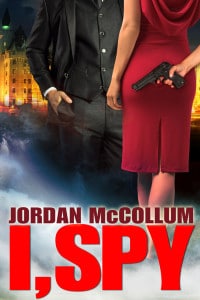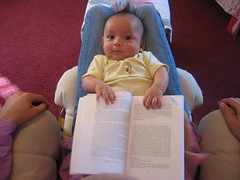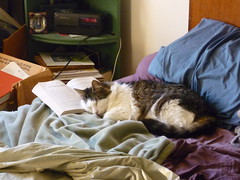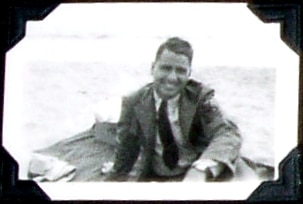Part two . . . sort of
Character arcs are vital in most fiction. We read to connect with people emotionally as they grow and change on the journey. We’ve already covered character arcs in a series once, but I’ve been thinking about and working with and digging deeper with character arcs since then, so I collected all that (and others’ thoughts, too) to put  them together.
them together.
This “omnibus edition” post covers some of the same topics as the series, but this is a new look at character arcs, digging deeper into some of the things we didn’t cover the first time around. Hooray!
Why characters should arc
In most fiction, character arcs are a vital element. A character who doesn’t arc (with specific exceptions) isn’t nearly as fulfilling to read about. In Save The Cat! The Last Book on Screenwritding You’ll Ever Need, Blake Snyder describes character arcs (italics in original, bold mine):
Arc is a term that means “the change that occurs to any character from the beginning, through the middle, and to the end of each character’s ‘journey.'” . . . But when it’s done well, when we can chart the growth and change each character undergoes in the course of a movie, it’s a poem. What you are saying in essence is: This story, this experience, is so important, so life-changing for all involved—even you, the audience—it affects every single person that is in its orbit. From time immemorial, all good stories show growth and track change in all its [sic] characters.
Why is this?
I think the reason that characters must change in the course of a movie [or book] is because if your story is worth telling, it must be vitally important to everyone involved. This is why set-ups and payoffs for each character have to be crafted carefully and tracked throughout. (135)
Character arcs aren’t just nice for readers—they show that the events of our story are worth reading about. The impact of the story is shown in the character arc, almost like a corollary to the “why does this story matter?” question that few people voice, but most people at least subconsciously wonder.
Answer that question, and your fiction doesn’t feel like a waste of time.
Finding your character arc
 There are dozens or perhaps hundreds of character journeys for arcs. (Alicia Rasley lists a bunch with some tips on plotting out that journey.) Think about how your character grows and changes over the course of the story. It doesn’t have to be a drastic 180-degree U-turn all the time. For example:
There are dozens or perhaps hundreds of character journeys for arcs. (Alicia Rasley lists a bunch with some tips on plotting out that journey.) Think about how your character grows and changes over the course of the story. It doesn’t have to be a drastic 180-degree U-turn all the time. For example:
Romance fiction, and most of its sub-genres, the hero is also the villain to the heroine. He’s a grump or a tyrant or a renegade. Maybe he’s the Rochester to your Jane Eyre, a married and bitter man to a sweet and innocent, though world-weary, ingenue. The point of the book is for him to “get” the heroine, which means the hero’s villainy must be “overcome.”
The hero has to change—not from actually evil to good, but from rude/inattentive/not interested/self-absorbed to its opposite.
But plotting this out from the beginning isn’t the only way to do this.
Developing the character arc
You can find your character’s arc at any point in the writing and editing process. When I first began writing, I didn’t give much thought to character arcs. If they got in there, it was either a coincidence or something I added in revisions.
After that, about the time I wrote the first series on this topic, I figured out the character arcs halfway through a first draft, and I often stopped to go back and adjust what I had.
Lately I’ve thought more and more about my character’s arcs before starting my story, and that helps me to the broad strokes in there. It does make a big difference in the quality of the first draft—my most recent book was <7 weeks from idea to finished novel, but it has those broad strokes. But, as always, there’s plenty of work left to be done in the next draft.
Yep, it’s okay to find or or develop or change your character arc after you write the book. Sometimes it’s easiest that way: you see what your character learned and then go back to the beginning to make it match the conclusion better. (Victoria’s article talks about circling back through your character’s internal journey to the beginning of the book. Deep stuff!)
Testing out your character arc beginning
If you don’t plot out your character arcs in advance (or even if you do), the beginning of the character arc often needs the most work. We have to match and offset the ending and make the change as dramatic as possible. Or, turning to Save The Cat by Blake Snyder again, use the “Take a Step Back” principle (emphasis mine):
 Take a Step Back applies to all your characters. In order to show how everyone grows and changes in the course of your story, you must take them all back to the starting point. Don’t get caught up in the end result and deny us the fun of how they get there. We want to see it happen. To everyone.
Take a Step Back applies to all your characters. In order to show how everyone grows and changes in the course of your story, you must take them all back to the starting point. Don’t get caught up in the end result and deny us the fun of how they get there. We want to see it happen. To everyone.
This is just one more example of how movies [and novels] must show the audience everything: all the change, all the growth, all the action of a hero’s journey. By taking it all back as far as possible, by drawing the bow back to its very quivering end point, the flight of the arrow is its strongest, longest and best. The Take a Step Back rule double-checks this.
If you feel like your story or any of its characters isn’t showing us the entire flight, the entire journey… Take a Step Back and show it all to us. We want to see it. (156)
Dig deeper in the beginning and show a big change! If your hero learns to show appreciation to his wife in the course of the story, don’t just have him be somewhat rude to her and pay more attention to the TV than her (not intended as a hint, Ryan). Have him be a total jerk.
Taking it a step back also makes the middle of the character journey more challenging for the writer—but if it’s handled well, it makes the whole journey more realistic for the reader.
The middle of the character arc
I think most writers have trouble with middles, and character arcs are no exception. The basic guideline here is to show the character making real choices between the beginning point and the ending point, and gradually moving toward the ending point—without making a full commitment to change yet
Or, as Alicia Rasley says in her article “Changes and Choices: External Action and Internal Reaction“:
If we keep presenting him with the choice to move closer or farther away from family [the character journey she’s using as an example (definitely worth reading!)], and make each choice an authentic one, then his growth will come out of his own actions and decisions. It’s best to make every response somehow different, and then assemble them in the order of emotional risk (no big deal to build his own house instead of one with them… but very big emotional risk to decide he’s responsible for the kid’s welfare at the end). But they have to be real choices, and he has to make real decisions and take real action.
This gradual change shows the journey better than thinking or pontificating about it could. (Though those are both part of the process, usually.) It also is a great opportunity to show the characters’ resistance and reluctance, making the final choice even more satisfying (and HELLO, CONFLICT!).
Ending the character arc
For me, this is the trickiest part, and the source of the biggest challenges and revelations I’ve had in the last couple years. There are two aspects to the end of a character arc: the climax and the rest of the dénouement.
The climax
At the climax of the story, we have to do more than just defeat the external plot forces. We either have to show that the character has learned his/her lesson and can use it to defeat the bad guy, or force the character to make the BIG choice to change, to take a leap of faith into the U-turn, post-arc state.
And that really affects how your climax goes.
 I’ll give you an example: in a MS I wrote last year, the heroine’s journey was one from disbelief to belief. The external plot had to do with bad guys chasing them and a physical confrontation with a psycho (obviously this is vague, but it’ll take too long to explain the rest, you know?).
I’ll give you an example: in a MS I wrote last year, the heroine’s journey was one from disbelief to belief. The external plot had to do with bad guys chasing them and a physical confrontation with a psycho (obviously this is vague, but it’ll take too long to explain the rest, you know?).
In the first draft, the hero and heroine work together to defeat the psycho and the bad guys. And that was it.
I knew it wasn’t as good as it could have been. I needed the external and internal plots to hit their high points at the same time. That balance is HARD. After pondering and brainstorming, I finally found a way to bring those to stories to a head at the same time: I had the psycho challenge the heroine about what she believed, telling her she was foolish to believe in the hero (who is separated from her right then). But despite the imminent danger, she still chooses to believe and throws her lot in with him instead of compromising
The rest of the dénouement
After the climax, it’s still important to show the results of the characters’ final choice, to confirm that change is real and permanent, not just an act of momentary convenience to beat the bad guy at a critical moment.
I really like how Alicia Rasley talks about this, again from her article “Changes and Choices: External Action and Internal Reaction“:
One last tip– readers will believe in the internal change only if they see it manifested on the external level. So we need some last little event that affirms the choice he made to become part of this family [the specific journey in the example]. Maybe the last sight we have of him is surrounded by the kids as they work together move his hut across the stream into the family compound– and Julie helping to set the hut on a new foundation.
We have to show that the character has changed, even if it’s a one-line post script.
Character arcs are challenging, and sometimes we leave them to chance. But if we execute our character arcs well, they make our fiction fulfilling to our characters—and our readers.
What do you think? How do you write character arcs? What are your favorite character journeys to read?
Photo credits: character arc logo—Ruth and Dave; St. Louis Arch—Matt;
starting line—Jayne and D; finish line—Aaron
 Of course, I totally neglected to mention that stuff on the blog (whoops), so here’s my apology (sorry!) and links to that awesome content (so far):
Of course, I totally neglected to mention that stuff on the blog (whoops), so here’s my apology (sorry!) and links to that awesome content (so far):

 The less tension, the better. Conflict is for aggressive people, and passive-aggression sells books. Besides, everyone knows people read just to enjoy the words you put on the page. Give them more words to mull over, less forward movement and action. If your character wants something, either have him/her give up, or give it to them quickly. Nobody wants to feel compelled to keep reading that way.
The less tension, the better. Conflict is for aggressive people, and passive-aggression sells books. Besides, everyone knows people read just to enjoy the words you put on the page. Give them more words to mull over, less forward movement and action. If your character wants something, either have him/her give up, or give it to them quickly. Nobody wants to feel compelled to keep reading that way.
 them together.
them together. 





 The character I’m playing with today is Frank Walters. He served in the Office of Strategic Services in World War II and when the story takes place, just after the war, he’s with the Central Intelligence Group (predecessor of the CIA). Physically, he’s based loosely on my husband’s grandfather Walter, who was in the Navy in WWII, pictured here. (Somehow we ended up with his WWII scrapbook. He traveled the whole world during the war, with pictures and postcards from Hawaii, Scotland, Iceland, Morocco, the South Pacific, and I know he served in Japan, too.)
The character I’m playing with today is Frank Walters. He served in the Office of Strategic Services in World War II and when the story takes place, just after the war, he’s with the Central Intelligence Group (predecessor of the CIA). Physically, he’s based loosely on my husband’s grandfather Walter, who was in the Navy in WWII, pictured here. (Somehow we ended up with his WWII scrapbook. He traveled the whole world during the war, with pictures and postcards from Hawaii, Scotland, Iceland, Morocco, the South Pacific, and I know he served in Japan, too.) Jeannie Campbell is a Licensed Marriage and Family Therapist in the state of California, and she’s an award-winning writer. She combined her two loves (brilliant!) with the
Jeannie Campbell is a Licensed Marriage and Family Therapist in the state of California, and she’s an award-winning writer. She combined her two loves (brilliant!) with the 
